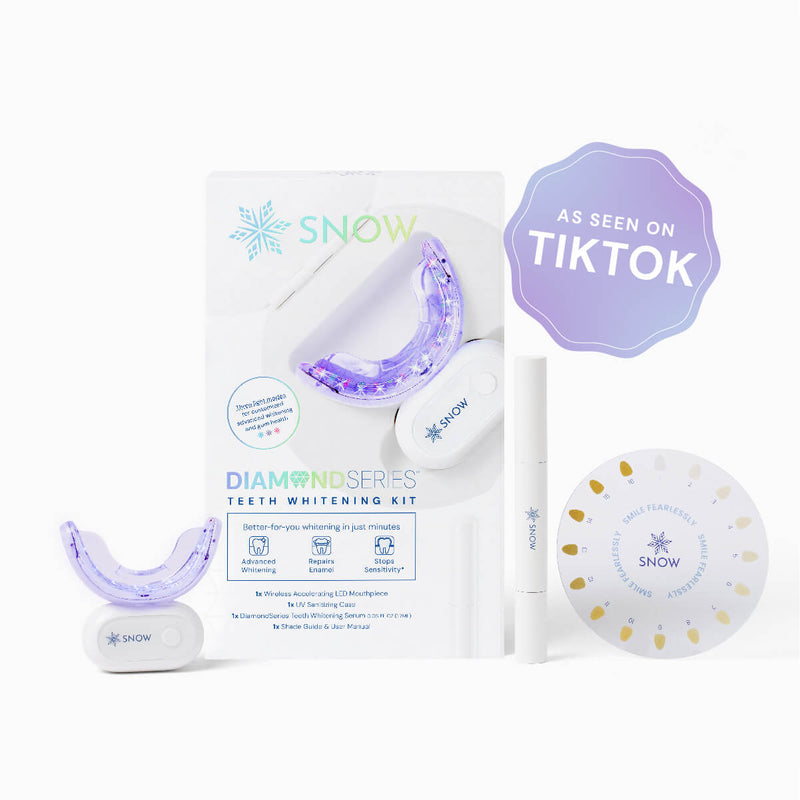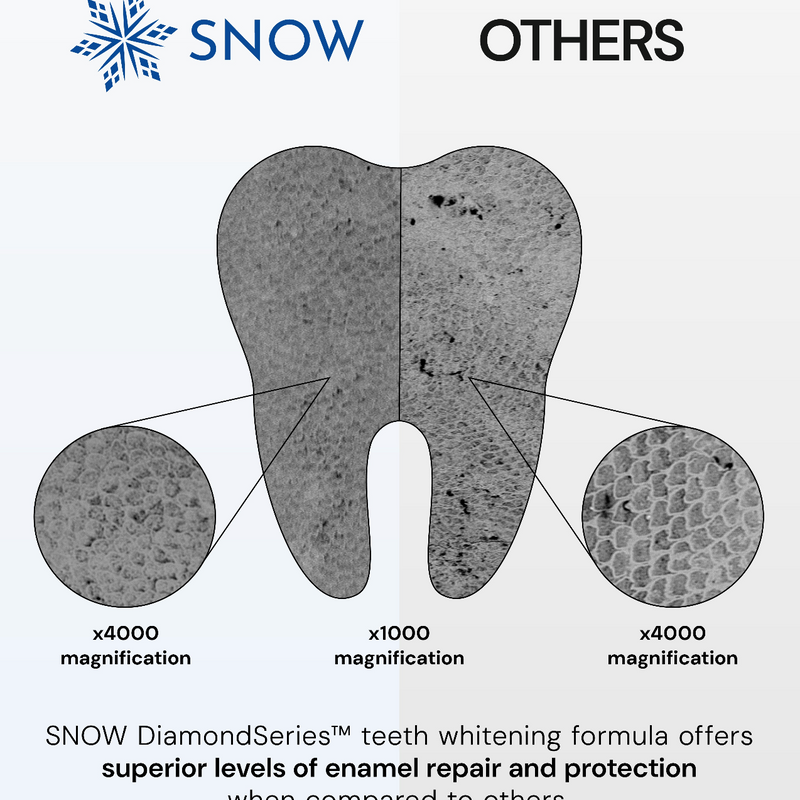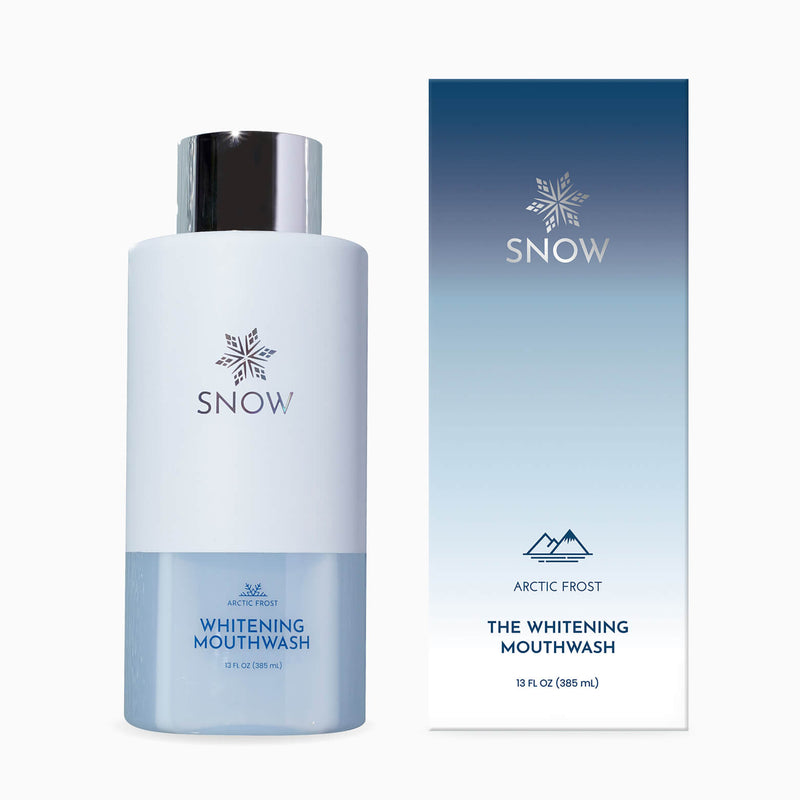Learning how to floss is simple yet essential for maintaining good oral health. Flossing removes food particles and plaque from between your teeth and gums, areas your toothbrush can't always reach.
In this guide, we'll cover everything you need to know about flossing, starting with how to floss teeth correctly. We'll also explore the best ways to floss if you have braces, when to floss, why it's important, and the different types of floss, including water flossers, floss picks, and traditional string floss.
Here are the steps and options for keeping your smile healthy and bright.
What this article covers:- How to Floss Teeth
- The Best Way to Floss with Braces
- When Is the Best Time to Floss?
- Why Should You Floss?
- Types of Floss
How to Floss Teeth
- 18 inches is the typical recommendation when it comes to how much floss to use. This may seem like a lot, but you'll need it to ensure a clean section of floss between each tooth.
- Wrap most of it around the middle fingers of both hands, leaving about 1-2 inches of floss to work with.
- Grasp the floss between your thumbs and index fingers. Keep it taut but avoid too much pressure, which can harm your gums.
- Guide the floss between your teeth using a gentle rubbing motion. Never snap the floss into your gums, as this can cause irritation.
- Once the floss reaches your gumline, curve it into a C-shape against one tooth. Gently slide it into the space between the gum and the tooth.
- As you move from tooth to tooth, unwrap a fresh section of floss to ensure you're not transferring debris from one tooth to another.
- Make sure to floss all your teeth, including the very back ones, where bacteria and food particles can easily hide.
Enhance your flossing routine with SNOW Activated Charcoal Whitening Floss, which detoxifies, removes plaque, and whitens between teeth.
The Best Way to Floss with Braces
- Carefully maneuver the floss around the braces and wires to avoid damage. Once the floss is between your teeth, use the same C-shape method as you would without braces to clean each tooth.
- Just like with regular flossing, you'll want to use a clean section for each tooth. How long should flossing take? Two to three minutes should suffice.
- A water flosser can be a great alternative for those with braces. It uses a stream of water to remove food particles and plaque from around braces with ease.
For deep cleaning around braces, try the SNOW Water Flosser, which offers three adjustable pressure modes and a collapsible water reservoir perfect for the road or trips overseas.
When Is the Best Time to Floss?
Based on our observations, the best time to floss is right before brushing your teeth. Flossing first helps to dislodge food particles and plaque from between your teeth, which brushing can then remove more effectively.
By flossing first, you're ensuring that toothpaste reaches all areas of your mouth, including those tight spaces between your teeth.
That said, the exact time of day doesn't matter as much as consistency. How often should you floss? We suggest once daily.
Pair your flossing routine with SNOW teeth whitening toothpaste, which is designed to whiten and strengthen enamel with nano-hydroxyapatite, making it ideal for sensitive teeth.
Why Should You Floss?
Our research indicates that flossing is essential because it removes plaque and food particles that get stuck between your teeth. Without flossing, these particles can build up and lead to plaque formation, which can eventually cause cavities and gum disease.

Flossing also plays an important role in preventing bad breath. When food debris gets trapped between your teeth and isn't removed, it can start to break down, releasing odor-causing bacteria. By flossing daily, you're taking an extra step to keep your mouth clean, fresh, and free from harmful bacteria.
Maintain fresh breath and enhance your whitening efforts with SNOW Arctic Frost teeth whitening mouthwash, which brightens your smile while keeping your mouth fresh with its minty, alcohol-free formula.
Types of Floss
Flossing has become more adaptable to suit a variety of needs and preferences, with several options available to help maintain excellent oral hygiene. Here are our top 3.
Water Flosser
A water flosser uses a gentle stream of pressurized water to clean between teeth and along the gum line, providing a refreshing and thorough experience. It is especially helpful for those with braces, dental implants, or bridges, as it reaches areas that may be more challenging with other flossing methods.
The flowing water also stimulates the gums, encouraging healthy circulation.
Our findings show that water flossers offer an easy and enjoyable way to enhance your oral care routine, promoting both gum health and a cleaner mouth.
Floss Picks
Floss picks are ideal for busy individuals who want to maintain their oral hygiene on the go or prefer a tool that simplifies reaching back teeth. Floss picks make the process fast and smooth, providing an effortless way to care for your teeth.
They are also a great tool for teaching children the importance of flossing, as the simple design helps them learn proper flossing techniques. For an on-the-go solution, SNOW Charcoal Whitening Floss Picks are an ideal choice.

String Floss
Available in both waxed and unwaxed varieties, string floss provides flexibility for different preferences. Waxed floss glides smoothly between teeth, while unwaxed floss offers a gentle, thorough clean.
Conclusion
Flossing is an essential part of maintaining a healthy, beautiful smile. Knowing how to floss properly ensures your teeth and gums stay free of plaque and debris, preventing problems down the line.
We've discussed the key aspects of flossing, from learning how to floss your teeth correctly to finding the best time to floss. We've also explored the different types of floss, each offering unique benefits that help make your oral care routine easier and more effective.
Visit our website today and take your flossing routine to the next level with SNOW's innovative oral care products.
If you want to learn more, why not check out these articles below:
- How Deep Should You Floss
- Why Does My Floss Smell Bad?
- Why is Flossing Important?
- Why Does Flossing Feel Good?
- Does a Water Flosser Replace Flossing?
- Does Water Flosser Remove Plaque?
- Does Water Flossing Hurt?
- Does Water Flosser Make Teeth White?
- Does Water Flossing Help with Bad Breath
- How to Clean Water Flosser
- How Often Should You Water Floss
- Can a Water Flosser Remove Tartar?
- Can You Put Mouthwash in a Water Flosser?
- Can I Use Water Flosser Everyday
- Water Floss Before or After Brushing

























